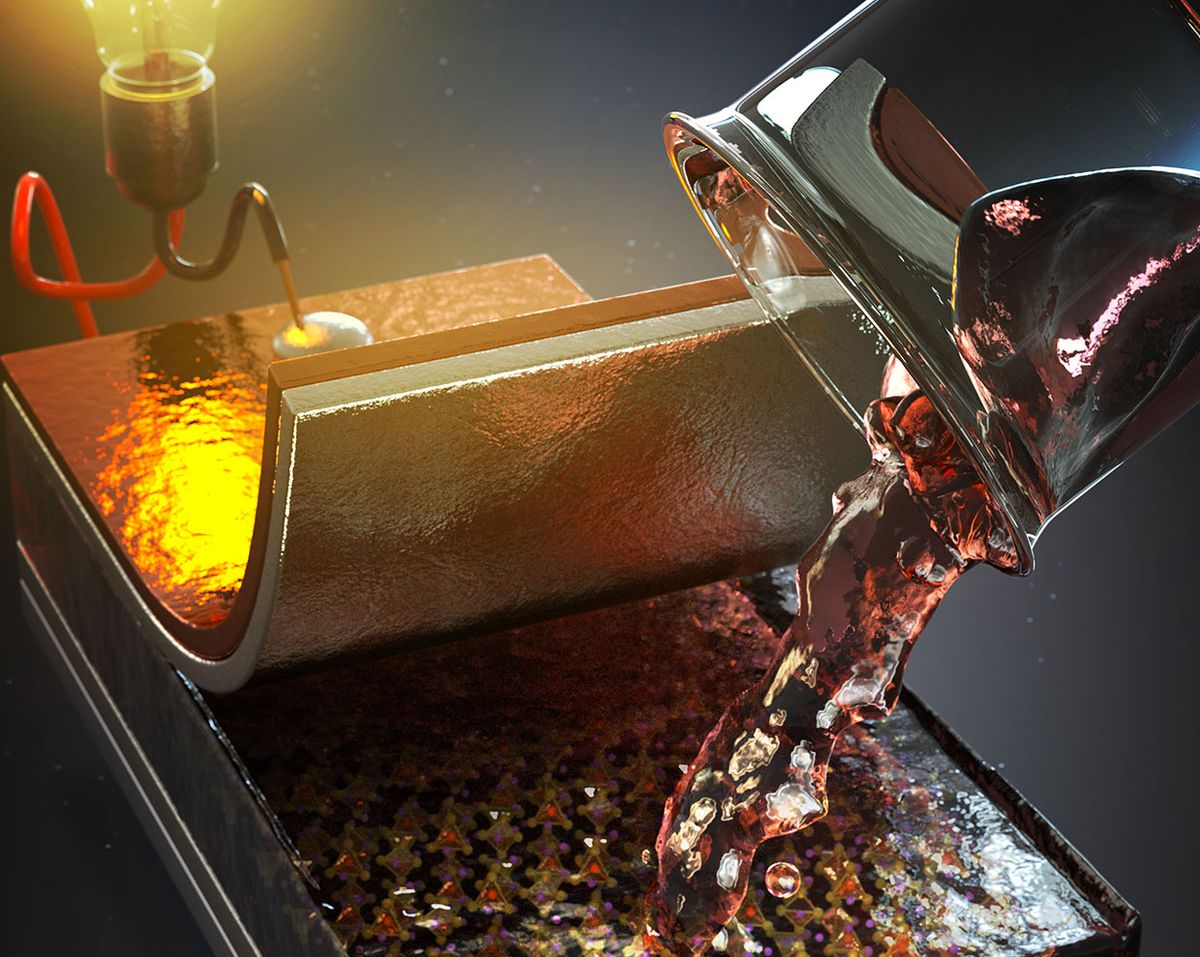New batteries are often described with comparatives: they’re safer, lighter, or longer-lived than today’s versions. Solid-state batteries—those which contain no liquid—can make two such claims. With inorganic electrolytes, they’re much less likely to catch fire than traditional lithium-ion batteries, which have organic electrolytes. And by swapping out graphite for lithium as the anode, you can get a massive increase (up to 10-fold) in energy density, making solid-state batteries look especially promising for electric vehicles.
“That’s the Holy Grail. Lithium metal has the highest gravimetric density of all materials,” says Adam Best, who’s in charge of battery research at the Commonwealth Scientific and Industrial Research Organisation (CSIRO), Australia’s national science agency.
But a major snag remains in bringing solid-state batteries to market—how to manufacture electrolytes that are strong and durable, yet thin enough to be good ion conductors. Ideally, these electrolytes should be tens of microns thick, similar to the separators in today’s lithium-ion batteries, says materials scientist Ping Liu from the University of California, San Diego. “But because most solid electrolytes are ceramic, when you make a thin layer, they’re inherently brittle,” he says.
Liu has spent the past four years working to overcome this problem. Together with collaborators from the University of Maryland and California-based startup Liox Power, Liu has developed a novel technique for fabricating solid-state battery electrolytes. The process starts with a solution, which then dries to leave behind an ion-conducting composite that doubles as both an electrolyte and cathode coating.
The electrolyte solution is a sulfide-based one, comprising beta-lithium thiophosphate (β-Li3PS4). It can be synthesized in a number of ways—Liu’s team has experimented with making it from various nucleophilic agents, solvents, and mechanical supports—but the key starting ingredients always include lithium sulfide (Li2S) and phosphorus sulfide (P2S5).
The resulting β-Li3PS4 solution is clear rather than slurried, says Liu, and when dried makes for uniform electrolyte layers. This evenness also allows it to be directly deposited onto the lithium sulfide cathode.
“Because we use a continuous process to make a battery without having to build individual layers separately, we don’t have to deal with the difficulty of handling very thin layers,” says Liu.
Conventional battery-making techniques for both lithium-ion and solid-state varieties often involve stacking or rolling individual electrolyte layers together. It’s an energy-intensive technique that entails mixing powders with binders using ball mills, and casting them into sheets that are sintered or pressed using pallets—requiring high temperatures and pressures.
Liu’s method does away with all of that. He and his collaborators also tweaked the β-Li3PS4 solution to guard against dendrite growth and make a safer battery. Dendrites are needle-like projections that form when lithium ions are plated unevenly onto the anode surface due to non-uniform electric fields, surface chemistry, or other reasons.
If allowed to form, dendrites can cause fires. “The point when a dendrite comes from an anode and then touches the cathode causes a lot of local heating. Depending on what source you read, this can be upwards of 1,500 to 2,000 degrees Celsius,” says CSIRO’s Best.
The electrolyte Liu and his team have developed helps prevent battery shorting by spontaneously reacting with dendrites to form inert products. “It’s very similar to how a wound fills to form a scar,” says Liu. “That’s why we call it a self-healing and self-forming mechanism.”
To date, the researchers have filed five patents covering their unique electrolyte-making technique. Their work is part of a proof-of-concept project funded by the U.S. governmental agency ARPA-E. Formally known as the Advanced Research Projects Agency-Energy, ARPA-E runs the Integration and Optimization of Novel Ion-Conducting (IONICS) program, which is aimed at developing next-gen solid-ion electrodes and separators for batteries and fuel cells.
While Liu’s project officially ended on 31 January, the team is now in talks with a different federal funding agency and an industry player to continue their work. The goal is to create a working prototype for a solid-state battery with a two ampere hour (Ah) capacity—similar to the capacity of most smartphone batteries today—at a target cost of below US $100 per kilowatt hour (kWh) within the next two to three years.
Doing so will take us one step closer to commercially viable solid-state batteries. Because such batteries can “hold much more energy and last longer...they can, in principle, replace virtually all the current lithium-ion batteries, from your phone to your laptop to electric vehicles,” says Liu.
“The demand for more energy-dense batteries will never go away,” he says. “If we can succeed at solid-state batteries, it will have a profound impact on society.”
Sandy Ong is an independent science journalist based in Singapore. For IEEE Spectrum, she often writes about the quest for better batteries. Ong also covers stories about health, tech, and the environment in Asia and beyond. Her writing has appeared in The Atlantic, Newsweek, WiredUK, and other publications. You may have even heard her on BBC Radio 5 Live’s “Up All Night” if you were listening at just the right time. Ong holds a bachelor’s degree in life sciences and a master’s degree in forensic science, and is a graduate of New York University’s Science, Health, and Environmental Reporting Program.



